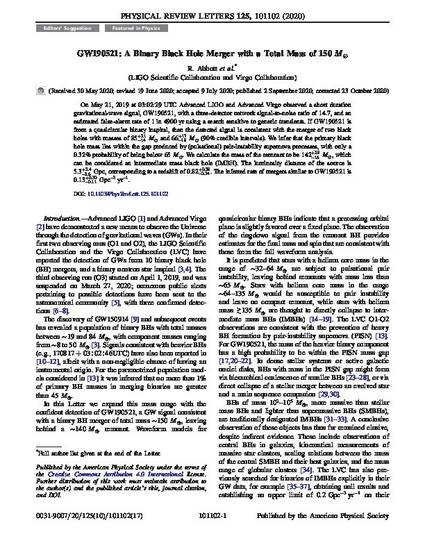
© 2020 authors. Published by the American Physical Society. On May 21, 2019 at 03:02:29 UTC Advanced LIGO and Advanced Virgo observed a short duration gravitational-wave signal, GW190521, with a three-detector network signal-to-noise ratio of 14.7, and an estimated false-alarm rate of 1 in 4900 yr using a search sensitive to generic transients. If GW190521 is from a quasicircular binary inspiral, then the detected signal is consistent with the merger of two black holes with masses of 85-14+21 Mm and 66-18+17 Mm (90% credible intervals). We infer that the primary black hole mass lies within the gap produced by (pulsational) pair-instability supernova processes, with only a 0.32% probability of being below 65 Mm. We calculate the mass of the remnant to be 142-16+28 Mm, which can be considered an intermediate mass black hole (IMBH). The luminosity distance of the source is 5.3-2.6+2.4 Gpc, corresponding to a redshift of 0.82-0.34+0.28. The inferred rate of mergers similar to GW190521 is 0.13-0.11+0.30 Gpc-3 yr-1.
Available at: http://works.bepress.com/tiffany_summerscales/176/
